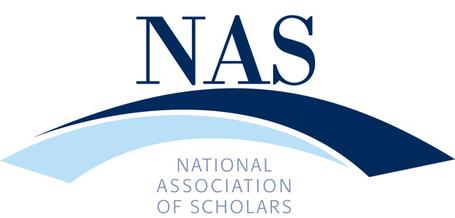Tennessee’s Triumph
This essay first appeared as a column in the Maryville Daily Times on July 7, 2023 (here). Thanks to the Tennessee Conservative News (here), and Power Line!
Many states have an iconic structure or monument that denotes a great accomplishment or distinctive cultural significance. New York has the Empire State Building and the Statue of Liberty. South Dakota has Mount Rushmore. California has Golden Gate Bridge and the Hollywood sign. Texas has the Alamo. Florida has Cape Canaveral. What does Tennessee have? Some might suggest the Ryman Auditorium in Nashville, home to the original Grand Ole Opry. Or the Parthenon. Or the Hermitage. Or Graceland. Or the Sunsphere, a reminder of the 1982 World’s Fair in Knoxville.
Those landmarks illustrate various aspects of the Volunteer State’s varied historical and cultural contributions, but the state’s greatest achievement of all is its role in ending WWII through the development of the atomic bomb. A critical part of the Manhattan Project took place in Oak Ridge, the so-called “Secret City” where upwards of 75,000 people labored for years under strict security to develop enriched uranium necessary to build a fission-type weapon.
When WWII began on December 7, 1941, with the Japanese sneak attack on Pearl Harbor, Oak Ridge was a remote, lightly-populated agricultural community nestled in a valley between the Cumberland and Great Smoky mountains. Less than four years later, in August 1945, Imperial Japan unconditionally surrendered following the American atomic bombing of Hiroshima and Nagasaki. What transpired in Oak Ridge during that period was one of the most impressive engineering feats in history.

Even though nuclear fission was nothing more than a theory when Albert Einstein warned President Franklin Roosevelt that the Nazis were trying to develop a weapon that harnessed the power of the atom, after Pearl Harbor the U.S. was suddenly fighting a two-front war. Our national survival was at stake. FDR launched the top-secret Manhattan Project in January 1942 to beat Hitler to the atomic punch. The Manhattan Project was so secret that FDR’s Vice President, Harry Truman, who became President upon FDR’s death in April 1945, was unaware of the development of the atomic bomb.
The Manhattan Project required enormous resources. When FDR approached Senator Kenneth McKellar (D-TN), ranking member of the Appropriations Committee, about the need to spend billions of dollars on a secret war project, McKellar reportedly responded “Yes, Mr. President, I can do that for you. Where in Tennessee would you like to build it?” Tennessee fit the bill in other respects—landlocked, secluded (but close to labor sources), with a moderate climate, cheap land, ample water, and abundant TVA-generated electricity. The U.S. Army Corps of Engineers acquired nearly 60,000 acres (displacing about 1,100 families) in Anderson County and commenced an unprecedented construction project.
Originally known as “Site X” or “Clinton Engineer Works,” the area that is now Oak Ridge was fenced, protected by guarded gates, and surrounded by total secrecy. The town didn’t even appear on maps.
The facilities needed to produce enriched uranium—using untested technology—were vast. The Army Corps, having overseen the construction of the Pentagon (the world’s largest office building), embarked on an even more challenging project in East Tennessee. Not only would gigantic (and highly complex) industrial buildings be needed to house the electromagnetic, gaseous diffusion, and thermal diffusion plants, a city would have to be constructed—from scratch—to house the burgeoning work force and their families. Engineers, scientists, and thousands of civilians were brought in to work on the Manhattan Project—none of them knowing the purpose of their efforts. By the end of the war, the population of Oak Ridge had reached 75,000, making it the fifth largest city in Tennessee.
At the time that it was built, the K-25 plant (housing the massive gaseous diffusion apparatus used to partially enrich uranium) was the world’s largest roofed building. The Y-12 plant (using electromagnetic equipment) was of a similar scale and complexity. At its peak, from 1943 to 1945, the Oak Ridge operations consumed one-seventh of all electricity produced in the United States. The Secret City, hidden from public view, used more electricity than New York City! Fortunately, these herculean efforts were successful. In combination with other elements of the Manhattan Project in New Mexico, Washington State, and elsewhere, enough enriched uranium was produced to build several atomic bombs, which ultimately prompted the fanatical Japanese to surrender—sparing countless American lives that would have been lost in an invasion of the mainland of Japan.
When the war was finally over, the federal government was able to lift the veil of secrecy and workers in Oak Ridge learned the objective of their intense efforts. Many Oak Ridge residents had grown to love living in the Secret City, and remained even after the federal government ceded control. The city successfully instituted civilian local government and continues to host significant government contractors engaged in nuclear technology. Oak Ridge is open to the public, just a short drive from Knoxville.
The fascinating history of the Manhattan Project is preserved throughout Oak Ridge, most prominently on the Secret City Commemorative Walk in the city’s A.K. Bissell Park. Several excellent museums showcase the city’s unique heritage. My favorite is the Oak Ridge History Museum, focusing on the “human side” of the Manhattan Project. An excellent book is Denise Kierman’s “The Girls of Atomic City.”
Oak Ridge truly represents Tennessee’s triumph.































